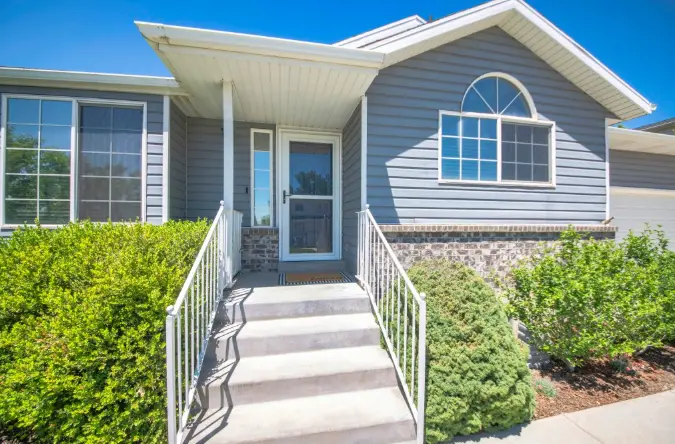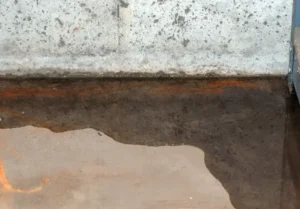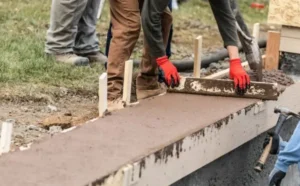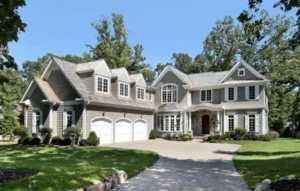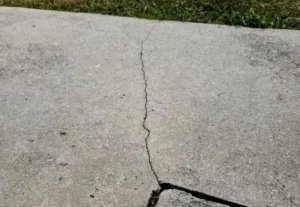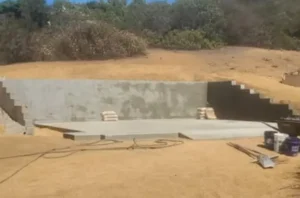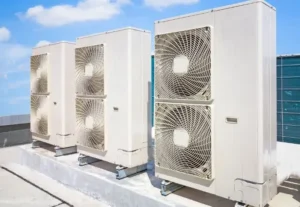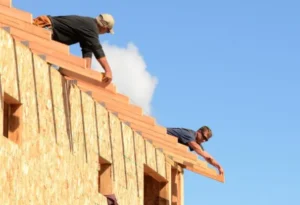Why Energy-Efficient Windows Matter
Windows are often one of the most overlooked elements in a home’s energy performance, but their impact is tremendous. Poorly insulated or outdated windows can make heating and cooling systems work overtime, resulting in higher utility bills and inconsistent comfort. National data highlights that up to 30% of the energy used for heating and cooling households escapes through inefficient windows. This loss is felt financially and contributes to greater environmental strain, as additional energy production leads to increased greenhouse gas emissions. For anyone planning a renovation or new build, considering window installation as a core element of the project is a smart way to save energy and money over the home’s life. Energy-efficient replacement windows are designed with advanced technologies that combat unwanted heat gain during summer and minimize heat loss during winter. As a result, indoor spaces remain stable and pleasant regardless of external temperature swings. Beyond immediate utility savings, upgraded windows also help reduce a home’s carbon footprint. They make engaging in broader sustainability movements easier by consuming less energy daily. Homeowners frequently report enhanced quality of life, fewer drafts, and a noticeable difference in noise reduction, proving that comfort and energy efficiency can go hand in hand.
Key Features of Energy-Efficient Windows
- Multi-pane glass: Double or triple glazing significantly improves insulation quality. Each pane is separated by a space filled with a gas, such as argon or krypton, which has better insulating properties than air. This construction dramatically reduces the heat transfer rate, making it both a cost-effective and energy-efficient choice for many homeowners.
- Low-E coatings: Low-emissivity or Low-E coatings are microscopically thin metallic layers applied to glass surfaces. These coatings reflect infrared energy (heat) while permitting optimal light transmission. In hot climates, they help keep homes cooler by blocking solar heat, and in colder regions, they reflect interior heat inside, decreasing the load on heating systems.
- Quality frame materials: Today’s window frames are available in vinyl, fiberglass, wood composites, and other highly durable options that maximize thermal resistance and withstand harsh weather. The frame material you select directly influences the window’s overall insulation value and can make a substantial difference in long-term energy savings.
- Advanced weatherstripping: Proper weatherstripping is essential for stopping air leaks. High-grade seals prevent energy loss by closing micro-gaps around the window, which are familiar sources of drafts in many homes.
- Innovative spacers: Warm-edge spacers are designed to maintain consistent separation between glass panes, reducing condensation and improving the thermal performance of the whole window unit.
By combining these features, energy-efficient windows create a powerful barrier against the weather. Experts at the U.S. Department of Energy note that advanced windows can lead to hundreds of dollars in annual energy savings per household. Even simple upgrades, such as better weatherstripping and more effective spacers, provide measurable improvements over time and help maintain comfort in all seasons.
Popular Window Styles for Energy Performance
The selection of window style isn’t just about looks; it also affects how well the window performs in your climate. Different types of windows offer unique energy-saving prospects and functional benefits depending on where and how they’re installed. For instance, casement windows, hinged at the side and opening outward, produce a surprisingly tight seal because the wind tends to press the sash against the frame. This quality makes them an excellent choice for areas where controlling drafts and air leakage is essential.
- Casement windows’ secondary benefit is ventilation. When open, they channel breezes into the home, which is especially useful for cross-ventilating living spaces during mild weather.
- Double-hung windows: Today’s models are vastly improved over their historic counterparts. They utilize advanced glazing, insulating sashes, and quality locks to minimize air infiltration while offering easy maintenance through features such as tilt-in sashes.
- Picture windows: These do not open, which helps eliminate many gaps that can lead to air and heat loss. As a result, they’re a go-to for spaces where a broad view or ample natural light is desired without sacrificing energy efficiency.
- Sliding windows: Ideal for wide openings and simple to operate, modern sliding windows are constructed with multiple panes and insulated frames to maintain comfort indoors while maximizing natural light.
When choosing a window style, consider room orientation, expected airflow needs, and your region’s climate. For many homeowners, a careful combination of several styles yields the best balance of function, comfort, and efficiency.
The Role of Professional Installation
The performance of even the highest-quality window rests heavily on the installer’s expertise. Installation mistakes—such as an improper fit, careless sealing, or out-of-square placement—can drastically erode the window’s energy-saving properties. Air leaks, moisture intrusion, or alignment problems often result from amateur installations and may lead to costly repairs down the line. A certified professional handling the work ensures that crucial steps—such as insulation, flashing, and sealing—are performed meticulously.
- Professional installation often extends or maintains product warranties, which frequently require expert labor as a condition of coverage.
- Quality installers verify that the frame and sash are plumb, level, and square, allowing all hardware to function as intended and preventing gaps or premature wear.
- Accurate placement and sealed perimeters protect your investment from water damage, mold growth, and drafts, contributing significantly to energy conservation.
For those updating older or historic homes, professional assessment and installation help preserve the building’s character while bringing needed energy-saving upgrades. The peace of mind that comes from a job well done often pays dividends in lower bills and fewer headaches for years to come.
Maintaining Window Efficiency Over Time
Ongoing attention keeps your windows working their best. Over the years, seals may grow brittle, hardware can loosen, and tracks may accumulate debris, all of which can compromise the overall efficiency of even premium windows. Regular maintenance checks are essential, not just for appearance but for preserving those hard-earned energy savings. Noticing condensation between panes, for example, can signal a broken seal, which warrants prompt repair or replacement.
- Conduct visual inspections at least once a year, paying special attention to vulnerable weatherstripping and caulk lines.
- Replace any damaged weatherstripping and touch up caulk to prevent sneaky drafts and moisture incursion.
- Clean glass and tracks regularly; dust and grime can impede the sealing action of the sash and deteriorate glazing over time, making regular care a practical investment.
With these small steps, you can avoid premature wear, extend the life of your windows, and retain the ongoing benefits of comfort and efficiency. Homeowners who keep up with maintenance typically notice their spaces stay warmer in winter, cooler in summer, and quieter year-round.
Cost Considerations and Incentives
The transition to energy-efficient windows does require an initial financial outlay, which varies by window style, material, and the complexity of installation. Still, reputable studies show that many homeowners recover this expense over several years through reduced energy bills. The benefits of weatherizing homes are clear: ENERGY STAR-certified windows, for instance, can save between $101 and $583 annually compared to outdated, single-pane units. Governments and utility companies encourage efficiency upgrades by offering rebates, tax credits, or flexible financing. At various times, federal tax credits for window replacement have covered up to 30% of qualifying costs. Local energy providers may also have special incentives for homeowners seeking to lower their consumption, especially in regions with extreme climates. It’s essential to research what’s available in your area; programs can frequently change, but the trend continues to move toward greater support for energy-saving home improvements. While each household’s circumstances are unique, the combined value from energy savings, additional comfort, noise reduction, and possible increased home valuation often justifies the up-front investment, making high-performance windows an impactful and rewarding project.
Real-World Results: Case Studies
Many homeowners have shared dramatic success stories after committing to comprehensive window upgrades. For example, a family in Chicago sustained a 30% decline in winter gas bills thanks to double-pane casement windows with advanced low-E coatings. In another instance, homeowners in Austin, Texas, noted their central air system was running less often after replacing original single-pane windows with modern argon-filled sliding windows—their summer electricity bills dropped noticeably.
- Midwestern properties noted improved comfort and less reliance on space heaters during severe winters after window retrofits.
- Historic homes benefited from customized, energy-efficient window solutions, which provided modern performance without disrupting architectural integrity.
- Survey responses confirm broader trends—homeowners across different climates consistently report greater satisfaction following window upgrades.
These real-life examples demonstrate that proper window selection and installation deliver measurable results in energy savings and everyday living comfort.
What’s Next for High-Performance Windows?
The field of window technology is advancing swiftly in response to shifting climate goals and greater demand for sustainable living. Emerging trends include smart, dynamic glazing—windows that automatically change tint in response to sunlight, reducing glare and controlling heat gain without manual effort. Modern frames are being constructed with increasingly sustainable and recyclable materials while manufacturers look towards building integrated photovoltaic (BIPV) window glass capable of generating energy for the home. As stricter building codes take effect in cities nationwide and consumers become more attuned to long-term value, selecting new windows and prioritizing professional window installation becomes more than just an upgrade—it’s an opportunity for better living and real environmental impact. These innovations empower homeowners to build greener, more resilient communities well into the future.
Also Read-What Are the Common Pitfalls to Avoid in Custom Home Projects?
